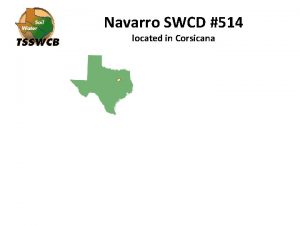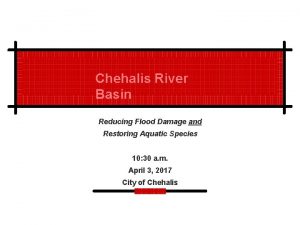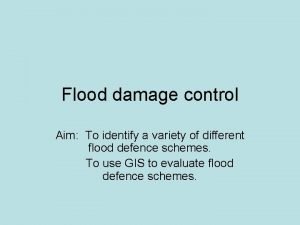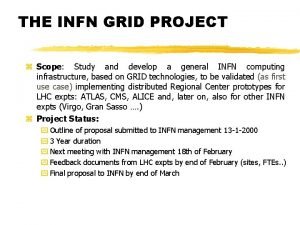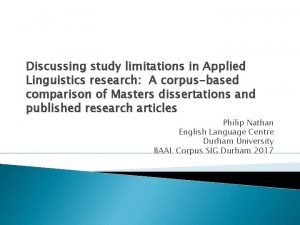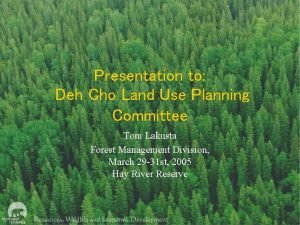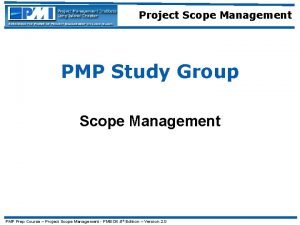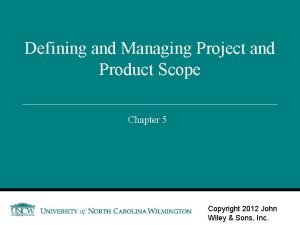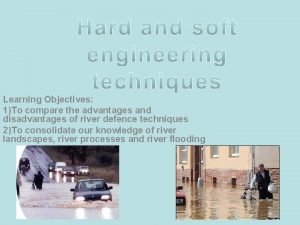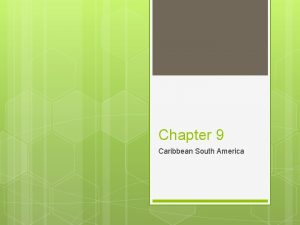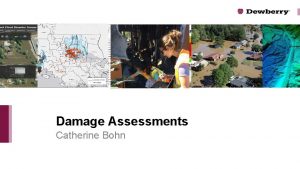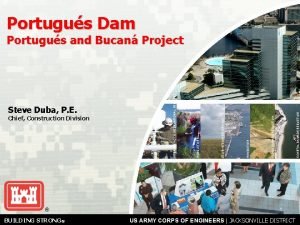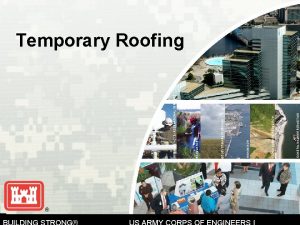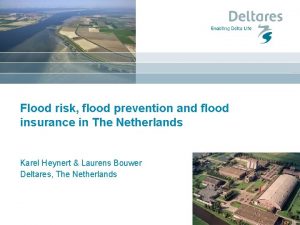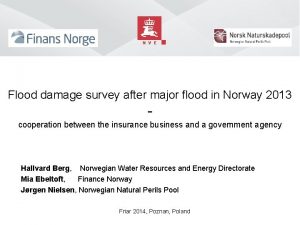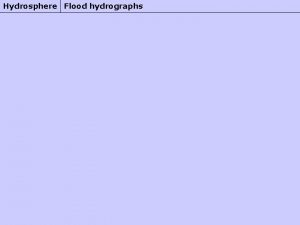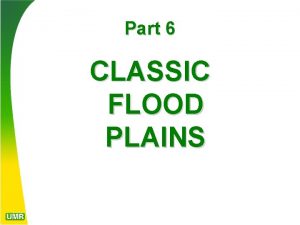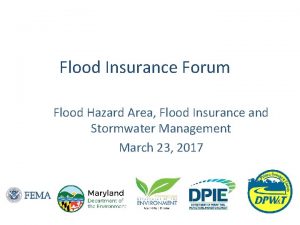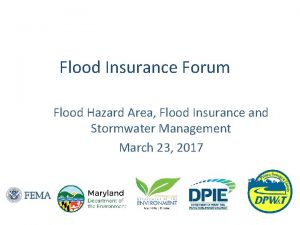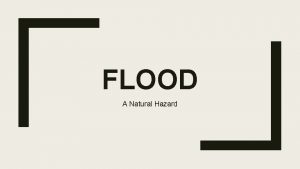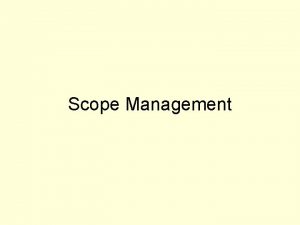Flood damage models Scope and limitations Forest Resources
















- Slides: 16

Flood damage models – Scope and limitations Forest Resources and Climate Unit Institute for Environment and Sustainability (IES) European Commission - Joint Research Centre José I. Barredo • EU Loss Data Workshop: Progress towards guidelines on sharing loss data among EU countries and state of the art of recording loss data at local level • 30 -31 March 2015 - Ispra

Assessing flood disaster losses • To account for the direct losses produced by floods • Direct economic damage is the tangible economic loss associated with a flood’s impact as determined after the event • These losses occur after floods as a result of the physical contact of the flood waters with damageable property • Indirect (i. e. secondary and tertiary) and intangible damages (i. e. loss of human life, Ill-health of floods victims), as well as longer-term macroeconomic effects are not considered

Flood damage models • Useful for assessing economic flood impact • These models produce estimates of flood damage • But the estimation of flood damage is a complex process involving a large number of hydrologic and socio-economic factors • Models: structure, inputs (data) and outputs. These depend on the purpose of the model

Flood damage models Baseline structure and data: Land cover Flood delineation Water depth CORINE data Copernicus – EMS Satellite imagery

Flood damage models Economic losses Flood damage functions € 400. 00 € 350. 00 € 300. 00 Land cover 111 Continuos urban fabric € 250. 00 Flood losses (Euro/m 2)€ 200. 00 € 150. 00 € 100. 00 € 50. 00 € 0. 00 0 1 2 3 4 Flood water depth (m) 5 6 Grid cell (100*100 m): Land cover class: 111 Water depth: 2. 0 m Economic losses: 2, 016, 500 Euro

Flood damage functions • Flood damage functions measure the susceptibility of assets to certain inundation characteristics, in this case specifically inundation depth • Flood water depth is the determining factor in almost all models in use today However other flood water parameters influence damage: • Flood duration: few minutes, days … • Water flow velocity: flash floods in mountain areas, narrow valleys • Sediment (and solid components) concentration in water • Pollutant content in water

Land cover limitations • CORINE land cover: Pan-European map • 44 land cover classes • Available at 100 and 250 m grid size • Minimum mapping unit: 25 ha* !!! • Linear (e. g. infrastructure) or small features are not well represented or not represented at all !!! * 4 cells (250 m); 25 cells (100 m)

Land cover limitations CORINE (100*100 m) 111 – Continuous urban fabric 18% transport 50% residential 5% commercial 17% other 5% unused 5% construction See: EEA 2006 The thematic accuracy of Corine land cover 2000 - Assessment using LUCAS (land use/cover area frame statistical survey), EEA Technical report No 7/2006.

Flood water delineation limitations Flood delineation and water depth • Copernicus Emergency Management Service: • Important support for flooded area mapping • Remote sensing limitations: lack of imagery (clouds), partial coverage, acquisition time of imagery (too early, too late) , … Water depth computation • This is a critical parameter that is usually not available: • Computation from EU-wide flood hazard map (100 -yr return period flood) • Assumptions based on ancillary information (minimum / maximum depth)

Comparing flood damage models

Comparing flood damage models We compared seven flood damage models: FLEMO (Germany) Damage Scanner (The Netherlands) 2002 2005 Rhine Atlas (Rhine basin) Flemish Model (Belgium) Multi-Coloured Manual (United Kingdom) HAZUS- MH (United States) JRC Model (European Union) Source: Jongman et al 2012. Comparative flood damage model assessment: towards a European Approach. NHESS, 12, 3733– 3752.

Results The models produced different results: • Modelled damage • Relative distribution: residential, industry & commerce and infrastructure Source: Jongman et al 2012. Comparative flood damage model assessment: towards a European Approach. NHESS, 12, 3733– 3752.

Results Uncertainty should be considered… Source: Jongman et al 2012. Comparative flood damage model assessment: towards a European Approach. NHESS, 12, 3733– 3752.

Summary of results • Model output are very sensitive to uncertainty in both vulnerability (damage functions) and exposure (asset values) • The first has large effect than the latter • Estimation of residential and commercial building damage is the best developed part of the models • Care needs to be taken when using aggregated land use data for flood risk/damage assessment • It is essential to adjust assets values to the regional economic situation and property characteristics Source: Jongman et al 2012. Comparative flood damage model assessment: towards a European Approach. NHESS, 12, 3733– 3752.

Conclusions • Results of models are estimations Check with reality e. g. claims from insurance companies customers • Land use data: • Varying density of assets at local level • Assets share inside each land use category • Flood damage functions: source, verification with reality, testing, sensitivity analysis • Infrastructure losses are usually underestimated • Regional/national variations in assets value

Thank you
 Flood damage corsicana
Flood damage corsicana Flood damage restoration the basin
Flood damage restoration the basin Flood damage control
Flood damage control Example of conceptual framework
Example of conceptual framework Scope and limitation
Scope and limitation Example of scope and limitation
Example of scope and limitation What is the difference between model and semi modal
What is the difference between model and semi modal What is transformation process
What is transformation process Fixed and variable resources examples
Fixed and variable resources examples Forest resources building
Forest resources building Forest resources
Forest resources Oregon forest resources institute
Oregon forest resources institute Product scope vs project scope
Product scope vs project scope Use case diagram
Use case diagram Renewable resources vs nonrenewable resources
Renewable resources vs nonrenewable resources Flood relief channels advantages and disadvantages
Flood relief channels advantages and disadvantages What did spanish settlers hope to find in venezuela
What did spanish settlers hope to find in venezuela
